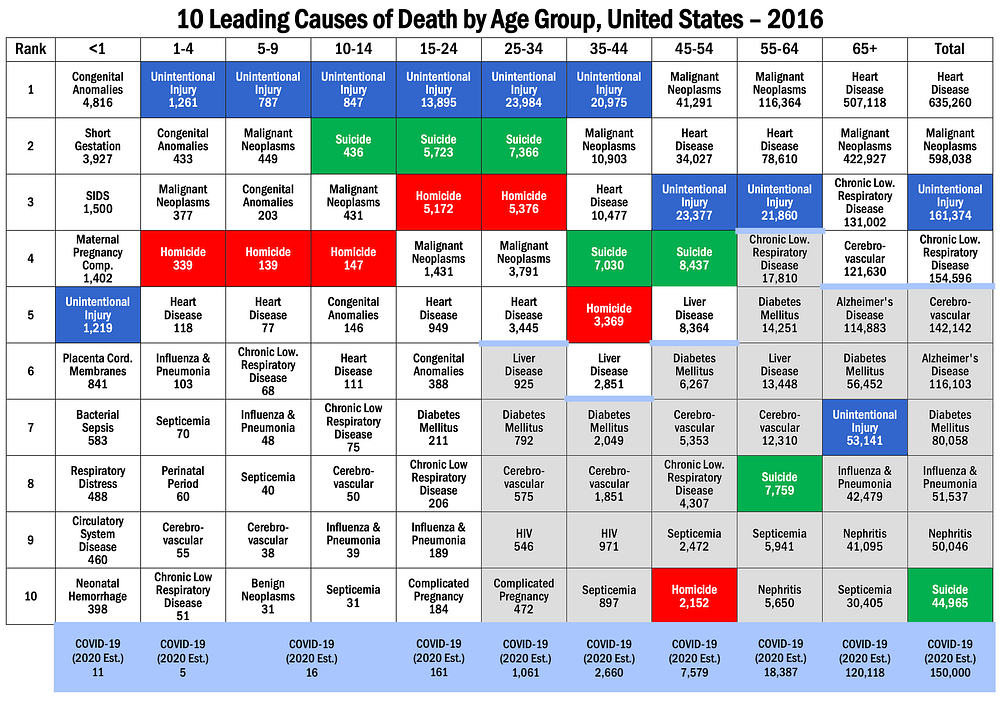jmr07019 wrote:claycarver wrote:I'm a visual person so this chart was better than a million words for me. They've estimated the 2020 total corona deaths at 150,000, broke those estimates down by age based on current trends, then showed how those deaths compare to 2016 causes of death.
Explanations and other interesting stuff on the page:
https://freopp.org/estimating-the-risk-of-death-from-covid-19-vs-influenza-or-pneumonia-by-age-630aea3ae5a9
Really puts things in perspective. I happen to think the estimate of 150k deaths is low but even if you doubled it to 300k I, at 30 years of age, am 12 times more likely to die from an unintentional injury than covid.
An important piece of context to this table is that most likely only a few percent of Americans have ever been infected with COVID-19, in large part due to drastic changes to our society and economy that suppressed the potential for large outbreaks. Compare that with the state of New York, where serology tests indicate that roughly 14% of residents have been infected with COVID-19. There have been nearly 23k confirmed deaths (and thousands more probable deaths) in the two months of the outbreak in New York. By contrast, in the entire year of 2017, 44k New Yorkers died of heart disease, 35k of cancer, and 4.5k of flu and pneumonia.
Keeping that in mind, the forward-looking conclusion "COVID-19 is less risky to me as a 30-year-old than unintentional injury" is only true if you remain very unlikely to get infected going forward. The current estimates I'm seeing for case fatality rate of COVID-19 in that 25-34 range is somewhere around 0.2%. If about a quarter of the 45 million Americans in that 25-34 demographic were infected with COVID-19, we would expect about as many 25-34 year olds to die from COVID-19 as from unintentional injuries. If 100% of them were infected, we would expect twice as many of them to die from COVID-19 as from all other causes of death combined.
What Roy is doing here is basically saying, "if you assume a constant of 150k deaths, COVID-19 isn't that risky, so it's OK for us to do things that may increase the spread of COVID-19," which is logically incoherent. As it happens, I don't expect 25% of Americans to become infected with COVID-19, but I expect that to be the case because we will continue to take at least some suppressive measures that hurt the economy, at least to some extent. And I say that even as someone who agrees with the conclusion that we need to try to get adults back to work, and kids back into schools and daycares.
















